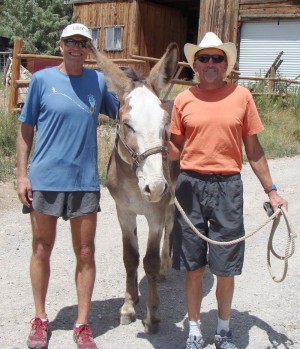By Martha Quillen
In April, Ed spoke to the Chaffee County League of Women Voters about the history of journalism in Chaffee County and included mention of Colorado Central Magazine, which made me realize that C.C. is eighteen years old now, which should make it old enough to vote. But despite the Supreme Court’s assumption that corporations have first amendment rights, they still can’t vote. Instead, they can merely buy elections.
Unfortunately Colorado Central hasn’t yet joined that elite one percent of citizens who can afford to purchase a candidate, but the magazine is nonetheless eighteen, and a lot has happened since it started.
Things were looking up when Colorado Central was born. Chaffee County had survived the departure of its traditional mining and railroading industries, and the tourism trade was growing.
As my father-in-law was fond of saying, “You can’t eat scenery.” But you can certainly sell it, and it was selling well in central Colorado. From Crestone to Granite, stucco was transforming our countryside. Big new hotels replaced our cabin courts, and faux villas and haciendas blossomed in our valleys.
Whereas once upon a time central Colorado was regarded as “out in the sticks,” suddenly it was just the right distance for a weekend retreat. But tourists wanted the same amenities here that they enjoyed at home. So furs, pelts, deer heads, antlers, horns, wagon wheels, and country kitsch were relegated to the attic, and within a few years, our restaurants and super markets looked just like the ones in Denver, except smaller.
When Central began, it was a new era, in which art was turning into a business and green into an industry. Homes with acreage, eco fairs, sports utility vehicles, straw bale homes, and mountain bikes were the rage. And even Saguache County, with its old-fashioned ranching heritage, featured galleries, fresh-roasted coffee, and organic produce.
During Central’s youth, local festivals quit being community events and turned into tourist attractions. There were art fests, fiber fests, movie fests, auto shows, fireworks, bike fests, balloon fests, and beer fests. FIBArk grew. Gold Rush Days boomed. Boom Days thrived; and the Blossom Festival flourished.
Volunteers in Salida and Gunnison worked hard to establish community theaters. Buena Vista displayed art in its Old Courthouse Museum. Crestone and Fairplay added rock festivals to their offerings, and Westcliffe embraced Country and Western music and Bluegrass. In Chaffee County, rafting, kayaking, fly fishing, and outfitting became genuine industries – essential to our economy. Playholes were put in our river, and river access was expanded, upstream and down.
Meanwhile real estate developers formulated all sorts of ideas for our future, including gated communities, 18-hole golf-courses, airports, condos, and big new franchise stores.
But local residents worried about growth, sprawl, and how much it would cost. Would the newcomers bring too much competition? Would an influx of new people change our way of life? Would we lose ranchland, green space, and rural ambiance?
Curiously, a lot of Salida’s old-timers (although certainly not all of them) were not as concerned about such possibilities – probably because our newest newcomers had more money than the hippies, artists, and boatmen who settled here in the 1970s and ‘80s. The old-timers’ world had already changed, but perhaps this time the changes might pay.
Some local residents wanted development and others didn’t. But no matter which way a community leaned, the experts said we needed a plan. Our governor said so; our county governments said so and our municipal governments said so.
So plans were hashed, rehashed, argued about, fought over, and finally passed throughout central Colorado. But in the end they didn’t do much good. Contrary to promises, planning didn’t ensure orderly development, or eliminate costly lawsuits, or safeguard us from expensive and unsightly consequences.
Considering all of the abandoned real estate projects in our region – the foreclosures, losses, and considerable amount of time, money and energy we wasted on failed projects – you might conclude that we would never do anything like that again.
But I suspect that we would – if we could.
Oh, sure, there would be citizens at the planning meetings fighting the new plans tooth and nail. But they were there the first time around, and things proceeded, regardless.
And if they hadn’t?
Well, we would probably be in the same place we are today – except without all of the new stores, shops, playholes, parks, festivals, and galleries.
Whether you like the way things turned out, or not, blame it on the bankers. We are where we are today because our national financial industries (bankers, mortgage brokers, credit card companies, and Wall Street) made ample money available for second homes, speculative development, and stuff (lots of stuff), and Americans spent it. We built homes, and upgraded our appliances, and bought cars, and expanded our parks, and hosted festivals, and sold geegaws, and pashminas, and granite countertops, and a thousand other things nobody really needed. And thus we generated plenty of jobs, which encouraged commerce, and thereby drove up our national GDP.
Now some critics blame the crash of 2008 on the little guy who charged too much on his credit cards. And others blame the rich guys who skimped on their taxes. And some blame Wall Street. And some blame the SEC, and Moody’s, and Standard and Poor’s. And the Republicans blame the Democrats; and the Democrats blame the Republicans.
And there’s truth in all of that.
But the big, incontestable truth is that America’s financial enterprises generated both the big bust and the unprecedented boom, which was largely built on bad credit, unscrupulous lending practices, inflated property assessments, extraordinarily optimistic ratings for stocks and bonds, worthless derivatives, and irresponsible speculation.
Short-sighted economists convinced everyone that markets were self-regulating and therefore diligent regulation was unnecessary. Modern bankers converted a stodgy, risk-adverse industry into something thrilling. The ratings services that evaluated U.S. stocks and bonds were malfeasant. The SEC was asleep, and Wall Street traders acted more like gamblers than businessmen. Under the circumstances, disaster wasn’t likely, it was inevitable.
But that doesn’t mean our financial gurus won’t do it again, because it was extremely lucrative – at least for them.
And for us? Well, we enjoyed a few perks, but unlike the bankers, we couldn’t just walk out when the going got rough. We had to face our declining economy, lost savings, and unemployment without a severance package.
But at this point, who we blame is less relevant than what we should do to ensure that it can’t happen again – because next time our economy might not recover.
The Tea Party insists that the U.S. should pay off its deficit ASAP – because responsible Americans pay their debts. So apparently that’s what Tea Partyers do in a financial crisis. When they’re nearly broke and their unemployment insurance is running out, they take what little they have left and pay off their mortgage.
Actually, I’m not buying it. And I suspect that even Tea Partyers aren’t buying it.
But it’s hard to know what strategies the Tea Party and Republicans really support. This year, instead of talking about what should be done and how they would do it, Republican candidates launched a wholesale culture war. They’ve played the race card, immigrant card, religion card, sex card, and every other card in the deck, while slamming Planned Parenthood, gay marriage, birth control, secularists, liberals, and Holland.
And without any evidence whatsoever, their supporters are calling Obama a racist, anti-Christian, anti-Israeli African Muslim foreigner intent on outlawing guns, God and Christian values (which is sort of funny since liberals tend to see Obama as maddeningly moderate and hopelessly conciliatory).
Rumor has it that most Republicans don’t love such tactics, but that begs the question: Who or what really directs campaigns? Party members? Monied interests? The candidates? Partisan pundits? On-line enthusiasts? Or the audiences?
I suspect it may be the audiences, and this season they’re applauding the death penalty and mean-spirited put-downs. The problem with such derision is not merely that it’s deceptive and rude. It’s that memories of such deliberately insulting and hostile bluster will discourage reasonable discourse and action no matter who becomes President.
I wish we could make health care more affordable. I wish I could count on Social Security and Medicare. But mostly I wish I could live out here in what used to be a backcountry retreat and not feel so threatened by my countrymen and Congress.
Martha Quillen and her husband turned twenty-one the first year eighteen-year-olds were allowed to vote.



